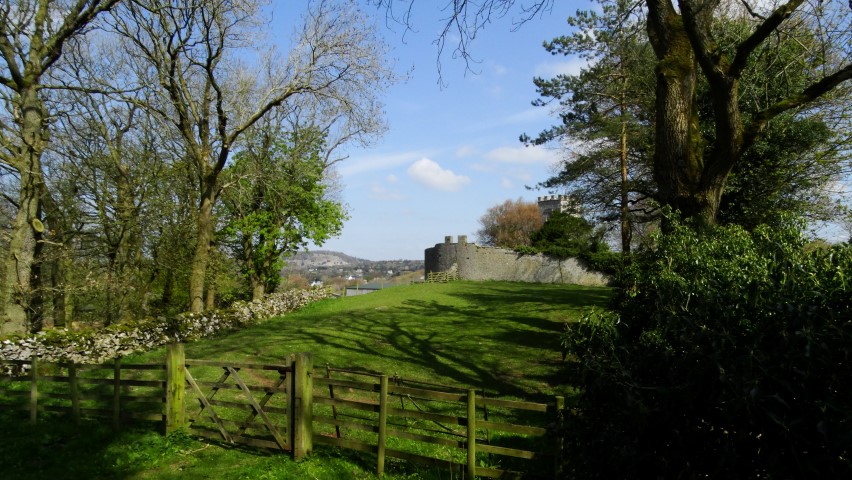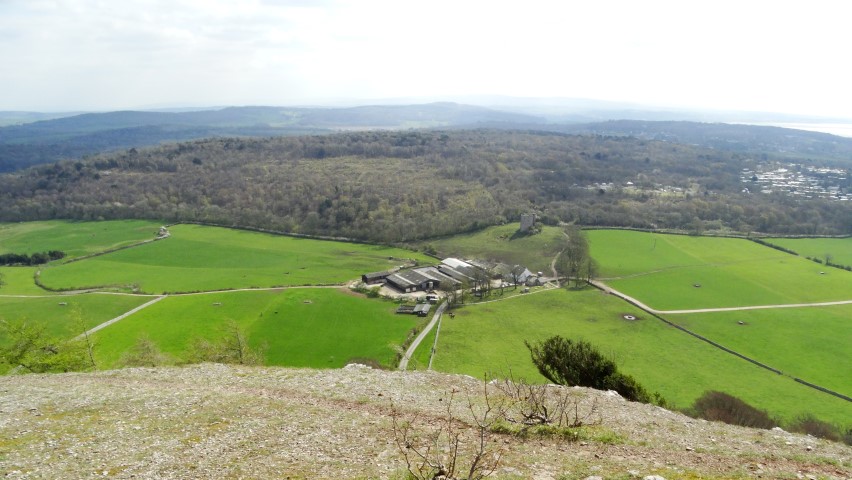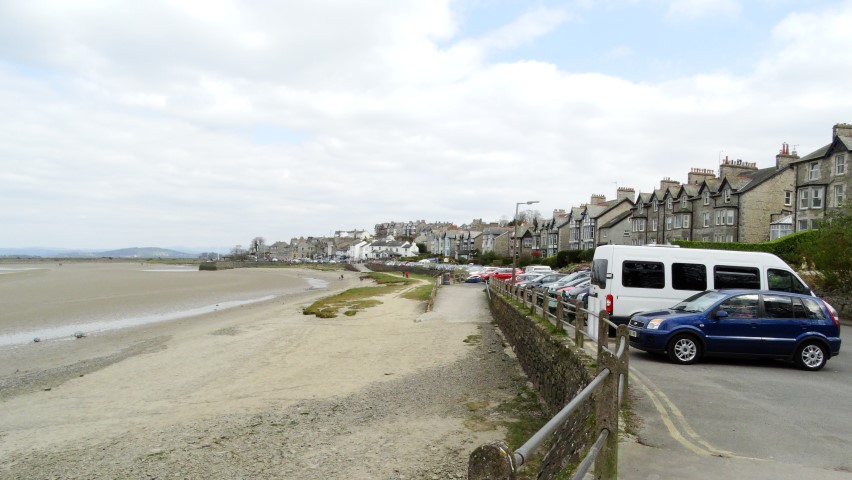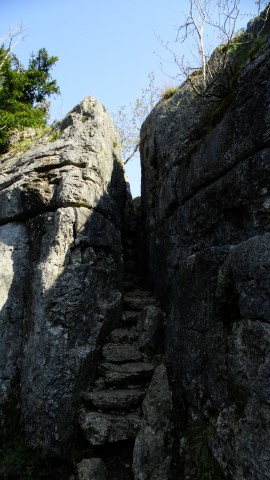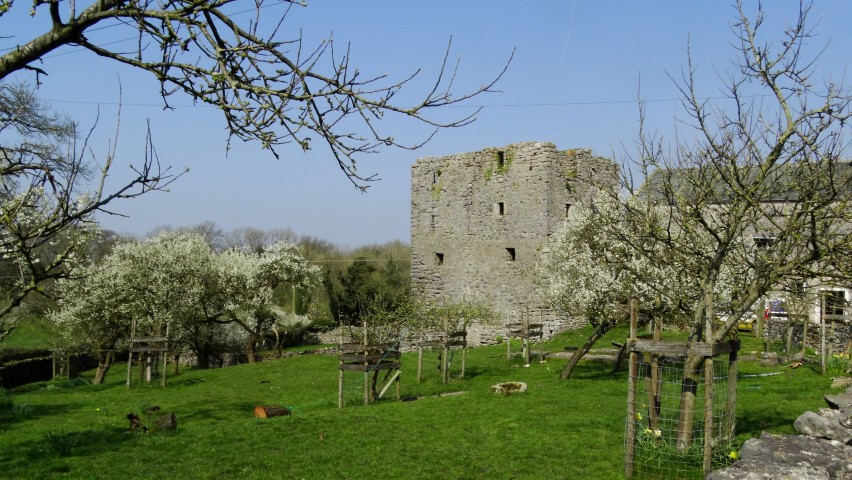Carnforth Station Clock (Long walk)
The long walk kicks off from Carnforth, a small railway town but today tourist flock to the Heritage Centre, situated in the railway station. The station was called ‘Milford Junction Station’ and became famous as the location for the classic 1945 film ‘Brief Encounter’ starring Celia Johnson and Trevor Howard. The famous clock which featured in the film has been restored and we will make a small detour to visit the station and view the clock.
Warton Old Rectory (Long Walk)
Under the care of English Heritage with free entry, Warton Old Rectory is now in a ruinous state. It was built in the early 14th century as the official residence of the rector for the nearby St Oswald’s Church. The building became ruinous early in the 18th century. It was not affected by the Dissolution of the Monasteries.
St Oswald’s Church (Long Walk)
This fine church dating from the 12th century dominates the village and is grade II listed. Extensive restoration was carried out on the building during the 15th and 16th centuries and the building has historical connections with the ancestors of George Washington, the first president of the United States. The church is well worth a visit and on my reconnoitre, taped background choral music made the building fell like a place of piece and sanctuary. One of the two village public houses is named ‘The George Washington’.
Warton Crag (Long Walk)
This area is an extensively wooded and is a nature reserve. Our walk will wander among the moss covered limestone crags and will ascend to the summit which is crowned with a beacon and trig point at 163 metres. Nearby there are extensive views across Morecambe Bay and beyond. The crag is the Site of Special Scientific Interest and home to several rare plants and rich in butterflies including the rare pearl bordered fritillary and high brown fritillary. The area is a regular breeding site for peregrine falcons.
Leighton Moss (Long Walk)
We will pass alongside the southern fringe of the RSPB Leighton Moss Nature Reserve. The area has the largest reed beds in northwest England. One of its visitors is the Bittern. To our left the salt marsh provides a habitat for birds such as avocets.
Mine at Crag Foot (Long Walk)
All that is visible today is the chimney of the former haematite mine at Crag Foot. Even now there are rich deposits of iron ore in this area which weren’t mined because of poor prices. Iron ore was originally taken from the site by packhorse and after the coming of the railway age, the iron ore made its journey south from the nearby Silverdale Station. A small tower which we pass on the foreshore was built as a chimney in the 1780’s and its purpose was to smelt locally mined copper but the venture soon failed due to law suits. Today it is grade II listed.
Warduck’s Wall and Jenny Brown’s Point (Long Walk)
If the tide is out on our visit, we will see the remains of Warduck’s Wall stretching out into Morecambe Bay. This was a venture to reclaim land between this area and Carnforth. Started in 1877, the project was abandoned in 1879.
Who was Jenny Brown? My research has shown that she was the daughter of a local farmer who had a farm at the point in the sixteen hundreds.
Not far from this spot was the scene of a disaster in 1894 when the pleasure yacht ‘Matchless’ capsized in rough weather with the loss of 25 persons. Most of them were on a day out from northern mill towns.
Jack Scout (Long Walk)
We will walk over this rocky limestone headland which has good views across Morecambe Bay. A small diversion off our route is ‘Giant’s Seat’, a large seat made out of limestone blocks. The area is owned by the National Trust.
Lindeth Tower, Silverdale (Long Walk)
Now used as a holiday let and private, we do pass and see this unusual Victorian folly. Built in 1842 by Preston banker Hesketh Fleetwood this is a three storied castellated tower and is grade II listed. In the 1840’s and 1850’s Elizabeth Gaskell stayed in the tower and wrote her novel ‘Ruth’ here.
Silverdale Cove (Long Walk)
Our walk takes us along the coast and down to this attractive cove which is surrounded with limestone cliffs and Silverdale Cave.
Arnside Tower (Long, Medium and Short walks)
This substantial ruin is dominant on the skyline for the medium and short walking groups for some time before reaching it. This tall ruin dates from the latter part of the 15th century and is constructed of limestone rubble. The tower was originally five storeys high. Following a severe fire in 1602, the tower was restored and was in use up until the end of the 17th century after which is became ruinous. Around 1900 a large portion of the south wall collapsed and today despite it being grade II listed the tower is in a poor state of repair.
Just beyond the tower, all three groups will stop at Arnside Tower Farm Cafe where afternoon tea, coffee, cakes and locally made ice cream can be bought. (I can recommend the ice cream !)
Arnside Knott (Long, Medium and Short Walks)
It is well worth the effort to ascend to the 159 metre summit. Although most of the hill is covered in woodland, there are excellent views just to the south east of the trig point over Arnside Tower and Morecambe Bay, whilst from the viewpoint on the northwest side of the hill you get a good view over the Kent Estuary and if clear you can pick out most of the main summits in the Lake District. The is a toposcope at this point.
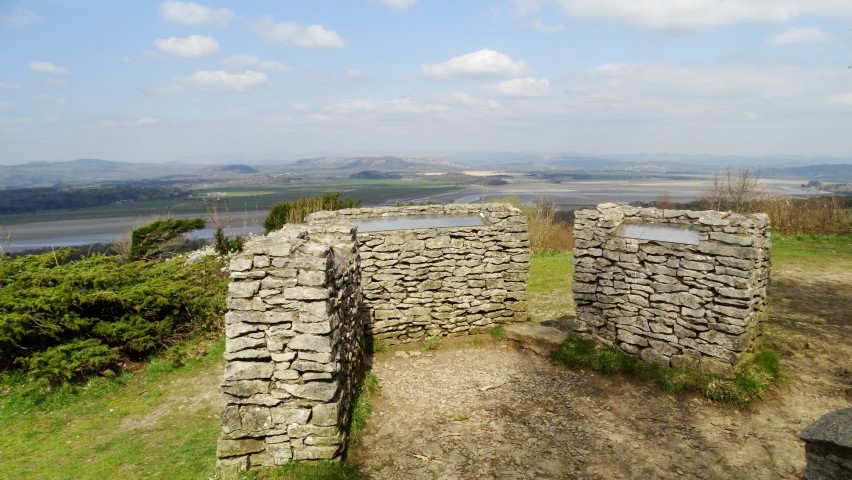
The view over the Kent Estuary from Arnside Knott. If it is clear, we should have a good view towards the Lake District.
Arnside (Long, Medium and Short Walks)
This is the finish point of our walk. The village has several cafe’s overlooking the Kent Estuary. The Kent Railway Viaduct built originally in 1857 and 505 metres long crosses the estuary just upstream from the village. We may be even lucky enough to see the ‘Arnside tidal bore’ which occurs just over an hour before high tide. A siren sounds twelve times to warn people to leave the beach prior to its arrival. In favourable conditions the bore can be up to a foot high and is caused by the tide rushing in over the vast expanse of sands.
Milnthorpe (Medium walk)
This is the start point for the medium walk. Milnthorpe is a small market town on a busy crossroads and was once a port on the River Bela.
Dallam Tower (Medium Walk)
On the medium walk there is a good view to this grade I listed house. It is not usually open to the public and was built on the early 18th century on the site of an earlier building. Prior to that there was a pele tower on the site.
Dallam Deer Park (Medium walk)
The 190 acre deer park is passed through on the medium walk which gives mile of fine open parkland to walk through. Walkers should see the herd of fallow deer which freely roam the park. The walk passes close to the grade II listed deer shelter.
Fairy Steps (Medium walk)
This is one of the highlights of this walk and a spot where you will need to squeeze through a narrow and polished limestone cleft. You will need to remove your rucksack for this. It is a right of way and old coffin route for burials heading for the church at Beetham as there was once no consecrated ground at Arnside. At one time coffins would need to be hauled up the cliff face. (A easier route has now been created little further south which avoids all difficulties). A local saying is that if you can negotiate Fairy Steps without touching the sides of the chasm then you will see a fairy! This may only be possible for a small child.
Hazelslack Tower (Medium and Short Walks)
This is where both the medium and short walks converge but both will reach this point via different routes. Hazelslack Tower is a ruinous pele tower dating from the 14th century and is now attached to a farm. The building lies on private ground but there are excellent views from the path and lane nearby. Like Arnside Tower, Hazelslack Tower is a fortified tower house and many were built in the borders of northern England and southern Scotland and used as watch towers where signal fires could be lit a the garrison to warn of approaching danger.
Silverdale Moss (Medium and Short Walks)
Part of the Leighton Moss Nature reserve, both walks will have views to this area between Hazelslack Tower and passing beneath the railway.
As you can see, there is plenty to discover on all of these walks in this outstanding corner of England. There are still spaces on the coach for this walk so don’t miss this great opportunity to walk with friends on what we hope will be an excellent day out. See the E-mail sent out by East Cheshire Ramblers on May 1st giving full details of booking and pick up times from Macclesfield and Wilmslow.






